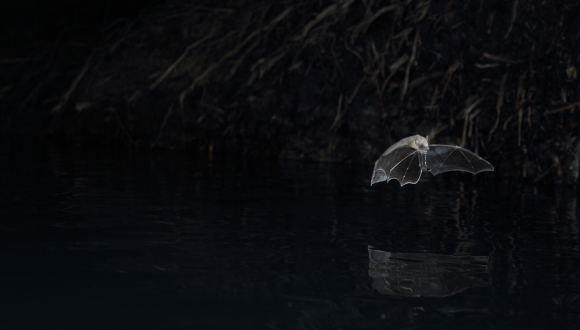Why do bats fly into walls?

TAU research finds that the combination of a large object and a weak echo disrupts the animals’ sensory perception
Support this researchBats excel in acoustic perception and detect objects as tiny as mosquitoes using sound waves. Echolocation permits them to calculate the three-dimensional location of both small and large objects, perceiving their shape, size and texture. To this end, a bat’s brain processes various acoustic dimensions from the echoes returning from the object such as frequency, spectrum and intensity.
But sometimes bats collide with large walls even though they detect these walls with their sonar system. Researchers from Tel Aviv University (TAU) have concluded that these collisions do not result from a sensory limitation but rather from an error in acoustic perception.
The study was led by Dr. Sasha Danilovich, a former PhD student in the lab of Prof. Yossi Yovel, Head of the Sagol School for Neuroscience and faculty member at the School of Zoology at the George S. Wise Faculty of Life Sciences. Other participants included Dr. Arian Bonman and students Gal Shalev and Aya Goldstein of the Sensory Perception and Cognition Laboratory at the School of Zoology and the Sagol School of Neuroscience. The paper was published on October 26, 2020, in PNAS.
The TAU researchers released dozens of bats in a corridor blocked by objects of different sizes and made of different materials. To their surprise, the researchers discovered that the bats collided with large sponge walls that produce a weak echo as if they did not exist. The bats’ behavior suggested that they did this even though they had detected the wall with their sonar system, indicating that the collision did not result from a sensory limitation, but rather from an acoustic misperception.
The researchers hypothesize that the unnatural combination of a large object and a weak echo disrupts the bats’ sensory perception and causes them to ignore the obstacle, much like people who bump into transparent walls.
The researchers then methodically changed the features of the objects along the corridor, varying their size, texture and echo intensity. They concluded that the bats’ acoustic perception depends on a coherent, typical correlation of the dimensions with objects in nature — that a large object should produce a strong echo and a small object a weak echo.
“By presenting the bats with objects whose acoustic dimensions are not coherent, we were able to mislead them, creating a misconception that caused them to repeatedly try to fly into a wall even though they had identified it with their sonar,” Danilovich explains. “The experiment gives us a peek into how the world is perceived by these creatures, whose senses are so unique and different from ours.”
The research paper is available at the journal’s web site here.